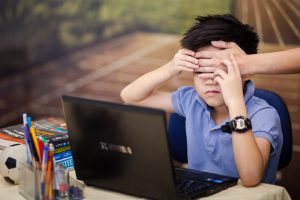Online Content
Understanding Plagiarism
Thanks to the internet, it has now become faster and easier to access information. This also means plagiarism – the act of taking or copying someone else’s work and passing them off as one’s own – is on the rise, especially among the young, tech-savvy generation. Let’s uncover the reasons for this:
- Many are simply unaware their actions constitute academic dishonesty (1). The copy and paste function has become so frequently and thoughtlessly used, users are desensitised to the moral questionability of their act.
- The Internet has become the first place to go to, rather than our own brains. Pose any class of teenagers a question and watch their response – very likely iPads, laptops and smartphones will be whipped out almost instantaneously. Certainly, technology should complement and enhance education. However, blindly copying without first exercising independent thought is to be discouraged.
- Many students, when asked why they plagiarise, defend themselves – ‘I can’t think of a better way to say it!’ or ‘why rephrase something when it is already phrased so well!’ While it is true that the Internet is a vast, comprehensive source of knowledge, not everything online is accurate and reliable. There are always ways to verify and improve existing pieces of information.
- Some youths struggle academically, so they may choose to plagiarise in fear of not being able to produce high quality work. Research shows that there is a higher incidence of plagiarism among international students, than compared to local students. This happens because they are not comfortable with the language that academic disciplines are taught in. Some may be too embarrassed to seek additional help, so plagiarism becomes a strategy to cope.
It is necessary to maintain academic integrity and authenticity – especially in this digital age where copying, reuse and sharing of information are the norm. Here are some tips for you and your children to keep in mind!
Tips
- If a child has plagiarised, don’t blame him/her immediately. It is important to first uncover why they did it. Parents and teachers should differentiate between children who ‘just don’t want to do the thinking’ (i.e. laziness, taking the easy way of copying information) and those who face genuine obstacles (e.g. language barriers)
- Teach proper citation. Different formats of acknowledgment are used for quoting, paraphrasing and summarising; do clarify with teachers for the preferred methods. The latest editions of Microsoft Word have functions to insert references and citations quickly.
- Encourage your child to consult a plethora of resources besides online media. Hard copies, for example, tend to be more reliable sources of information since written works have to undergo quality and authenticity checks as part of the publishing criteria. Moreover, reading widely provides a more holistic, multi-faceted perspective on issues.
- Promote the study and analysis of primary sources, instead of referring to secondary sources. A primary source is a document or physical object which was written or created during the time under study, and offers an inside view of a particular event. Examples are original documents such as diaries, letters, interviews, news film footage, official records as well as artefacts like pottery or buildings. A secondary source interprets and analyses primary sources; for example, textbooks, criticisms and commentaries (1). The process will definitely be longer and more challenging, but it can hone your child’s analytical and critical thinking skills.
- Another way to prevent plagiarism is to get your children to practise summarising and identifying key points. This will discourage them from copying and lifting huge chunks of information in their assignments.
- Educators can provide students with access to Turnitin.com, the originality checker software. Typically, universities and high schools buy licences to submit essays to the Turnitin website, which checks the documents for unoriginal content (2). This allows students to take ownership of their work and run assignments through the site.
1 Summarised from http://www.princeton.edu/~refdesk/primary2.html
2 Quoted from http://en.wikipedia.org/wiki/Turnitin





